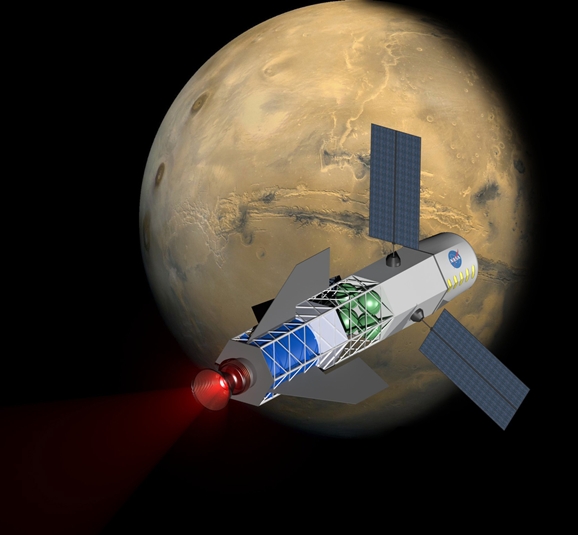NASA-Backed Fusion Drive Could Get Us To Mars In 30 Days
This article is more than 2 years old
In Jules Verne’s classic book, the eccentric Phineas Fogg leaves his peers gobsmacked when he bets them that he can circumnavigate the globe in 80 days, and then does exactly that. Now University of Washington researchers have a proposal that would undoubtably put a smile on Mr. Fogg’s face: they’re working on a fusion engine that they suggest could cut the travel time to Mars down to a mere 30 days. That’s genuinely jaw-dropping when compared to NASA’s estimated travel time for a round-trip journey using conventional rockets: a whopping four years.
One of the biggest obstacles to expanding further into our own solar system is the sheer cost and the amounts of fuel required to get you from here to wherever you’re going. But the proposed fusion-powered vessel wouldn’t require the massive payload of fuel, and the key process could be powered by solar energy collected during the voyage.

As UW lead researcher John Slough puts it, “We are hoping to give us a much more powerful source of energy in space that could eventually lead to making interplanetary travel commonplace.”
So how would it work? The scientists have created a type of plasma which, when compressed within a magnetic field, can produce a powerful fusion reaction. The team has demonstrated this process in the lab, and a small “grain of sand” of the material can generate as much energy as a one gallon of rocket fuel. In their design, the powerful magnetic field collapses metal rings around the plasma, sparking a fusion reaction and creating an ionized ”shell,” which is then ejected out the back of the craft, propelling the ship. You can see a couple of videos demonstrating this process below.
The researchers have published papers breaking down the specifics of possible 30- or 90-day trips to Mars using the process. Having demonstrated successful tests of the various portions of their concept, they now have to demonstrate that it all works when strung together as a whole. After demonstrating their success so far, they recently received a second round of funding from NASA’s Innovative Advanced Concepts Program.
Slough continues: ““I think everybody was pleased to see confirmation of the principal mechanism that we’re using to compress the plasma. We hope we can interest the world with the fact that fusion isn’t always 40 years away and doesn’t always cost $2 billion.”
If it all works as they claim, this could be the thing that finally makes further space travel more feasible and affordable. Fingers crossed!












